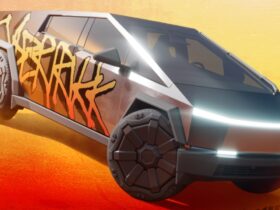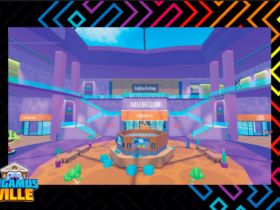With the technology behind virtual reality hardware, such as Oculus Rift, constantly improving, total immersion into the virtual world seems to be closer than ever. But what about the controller?
Pressing a button to swing your sword may look cool on screen but, ultimately, you are still just pressing a button. This fact can easily break the sense of presence in a virtual world, especially for those unfamiliar with traditional controllers. On the other hand, camera-based motion controls like the Microsoft Kinect or PlayStation Eye can easily translate natural motions into on-screen actions. So what if we combine an HMD like the Oculus Rift with motion controls? Imagine walking through the world of Skyrim where you can easily grab any object with your own hands. Eat food by taking the object and moving it to your mouth with a gesture or swing a sword that moves how you do. All in a 3D world that fills your entire scope of vision. Better clear the living room first!

These types of things become possible when you combine virtual reality and motion controls. This type of potential hasn’t escaped publishers’ notice either with recently leaked documents from Microsoft already mentioning the possibility for Xbox One. They certainly won’t be the only ones. While it may still not be perfect, the closer we move towards this type of total immersion, the more difficult it is going to become for anyone who enters a virtual world like this to leave it for the real one.
 Extreme Reality, an Israeli/based software company, is looking to take motion gaming to the next level by simplifying it. Since 2005, the software company has be working on software that would give ordinary webcams the same motion tracking abilities of devices like Microsoft’s Kinect. The implication of this is that any device with a camera could be motion controlled, from laptops to iPhones. No expensive extra hardware required. The technology itself uses the RBG image to calculate the 3D virtual skeleton of the user. Then by tracking the movement of their joints, the software calculates how there are moving in reality. The potential for this kind of technology goes far beyond just gaming applications, something that Extreme Reality fully intends to capitalize on.
Extreme Reality, an Israeli/based software company, is looking to take motion gaming to the next level by simplifying it. Since 2005, the software company has be working on software that would give ordinary webcams the same motion tracking abilities of devices like Microsoft’s Kinect. The implication of this is that any device with a camera could be motion controlled, from laptops to iPhones. No expensive extra hardware required. The technology itself uses the RBG image to calculate the 3D virtual skeleton of the user. Then by tracking the movement of their joints, the software calculates how there are moving in reality. The potential for this kind of technology goes far beyond just gaming applications, something that Extreme Reality fully intends to capitalize on.
 What does this mean for virtual reality? “Virtual reality still needs some user interaction. Imagine a webcam RGB image and in front of you are four buttons which the user can touch with his virtual hands – This is something we are already working on.” said Asaf Barzilay of Extreme Reality. He personally sees such motion technology being extremely useful for things such as avatar creation, allowing the user to directly manipulate their caricature as if they were a real object.
What does this mean for virtual reality? “Virtual reality still needs some user interaction. Imagine a webcam RGB image and in front of you are four buttons which the user can touch with his virtual hands – This is something we are already working on.” said Asaf Barzilay of Extreme Reality. He personally sees such motion technology being extremely useful for things such as avatar creation, allowing the user to directly manipulate their caricature as if they were a real object.
This marriage of motion tracking and virtual reality may very well be the key to creating an even more immersive experience than the technologies could even do separately.














